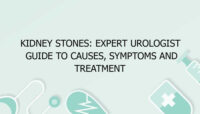Measles in Children: Symptoms, Causes, and Treatment
Measles in children is a highly contagious viral disease that has seen significant declines in incidence due to widespread vaccination. However, it remains a serious health concern, particularly in areas with lower vaccination rates. Understanding measles, its symptoms, causes, and treatment options is crucial for managing and preventing this disease. This comprehensive article aims to provide a detailed overview of measles in children, addressing key aspects and offering practical information for parents and caregivers.
Understanding Measles in Children
Measles is caused by the measles virus, a member of the paramyxovirus family. It primarily affects children but can occur in individuals of any age who are not immunized. The virus spreads through respiratory droplets when an infected person coughs or sneezes, making it highly contagious. Measles can lead to severe complications, particularly in unvaccinated populations, emphasizing the importance of vaccination and early intervention.
Transmission and Contagiousness
Measles in children is transmitted via the air through droplets from coughs or sneezes. The virus can remain infectious in the air or on surfaces for up to two hours, making it easy for others to contract the disease. The contagious period starts four days before the rash appears and continues until four days after the rash emerges. This high level of contagiousness is a significant factor in the spread of the disease, particularly in communities with low vaccination coverage.
Symptoms of Measles in Children
The symptoms of measles in children develop in stages, typically appearing about 10 to 14 days after exposure to the virus. The disease progresses through several phases:
1. Prodromal Stage:
- Fever: The initial symptom of measles is usually a high fever, which can rise to 104°F (40°C) or higher. The fever often starts about 10 to 12 days after exposure to the virus and lasts for several days.
- Cough, Coryza, and Conjunctivitis: Along with fever, children may experience a severe cough, runny nose (coryza), and red, watery eyes (conjunctivitis). These symptoms are characteristic of the prodromal stage and help distinguish measles from other respiratory infections.
2. Rash Stage:
- Appearance of the Rash: About 3 to 5 days after the onset of the initial symptoms, a characteristic rash appears. The rash typically starts on the face and neck and then spreads downward to the trunk and extremities. It begins as small red spots that may merge into larger patches.
- Koplik Spots: Before the rash appears, small, bluish-white spots with a red halo, known as Koplik spots, may be observed inside the mouth. These spots are considered a hallmark of measles and help in the diagnosis.
3. Recovery Stage:
- Rash Resolution: The rash usually lasts for about 5 to 6 days, eventually fading in the same order it appeared. As the rash resolves, the skin may become flaky and desquamate (peel).
- Return to Normal: After the rash resolves, the child’s fever typically subsides, and other symptoms improve. Recovery can be gradual, with lingering symptoms such as fatigue and weakness.
Causes of Measles in Children
Measles is caused by the measles virus, which is part of the paramyxovirus family. The virus is highly contagious and spreads through several mechanisms:
1. Viral Etiology:
- Measles Virus: The causative agent of measles is the measles virus, which is an RNA virus. It attacks the respiratory tract and then spreads throughout the body, including the skin and mucous membranes.
- Immunity: Individuals who have not been vaccinated or previously infected with the measles virus are susceptible to infection. Immunity is typically acquired through vaccination or recovery from a previous infection.
2. Risk Factors:
- Unvaccinated Status: The primary risk factor for contracting measles is not being vaccinated. The measles-mumps-rubella (MMR) vaccine is highly effective in preventing the disease. Children who have not received the full series of MMR vaccinations are at increased risk.
- Exposure to Infected Individuals: Close contact with someone who has measles or is suspected of having measles increases the risk of infection. Measles can spread rapidly in settings such as schools, daycare centers, and crowded public spaces.
- Immune System Status: Children with weakened immune systems or underlying health conditions may be at higher risk for severe complications from measles. This includes children undergoing treatments that suppress the immune system.
Diagnosis of Measles in Children
Diagnosing measles in children involves a combination of clinical evaluation and laboratory tests:
1. Clinical Evaluation:
- Medical History and Symptoms: A healthcare provider will assess the child’s symptoms, including fever, cough, and rash. The presence of Koplik spots and the characteristic progression of the rash can aid in diagnosing measles.
- Physical Examination: A thorough physical examination will be conducted to evaluate the rash and other symptoms. The appearance and distribution of the rash, along with other clinical signs, help in confirming the diagnosis.
2. Laboratory Tests:
- Serology: Blood tests can detect antibodies to the measles virus, confirming an active infection or past exposure. Specific IgM and IgG antibodies are tested to establish the diagnosis.
- Polymerase Chain Reaction (PCR): PCR testing can identify the measles virus’s genetic material in samples from the throat, urine, or blood. This test is particularly useful in confirming cases when clinical signs are ambiguous.
- Viral Culture: Although less commonly used due to the availability of more rapid tests, viral culture can be performed to isolate and identify the measles virus from samples.
Treatment of Measles in Children
There is no specific antiviral treatment for measles. Management focuses on supportive care to relieve symptoms and prevent complications:
1. Supportive Care:
- Fever Management: Fever can be managed with antipyretics such as acetaminophen or ibuprofen. Maintaining adequate hydration and comfort measures are important to manage fever.
- Symptom Relief: Cough and congestion can be alleviated with medications or home remedies, such as honey for coughs (for children over one year old), and using a humidifier to ease respiratory symptoms.
- Rest and Nutrition: Ensuring that the child gets plenty of rest and proper nutrition supports the immune system and overall recovery.
2. Prevention of Complications:
- Hydration and Nutrition: Adequate hydration and a balanced diet help support the immune system and prevent complications related to dehydration and malnutrition.
- Monitoring for Complications: Complications of measles, such as pneumonia, encephalitis, or severe diarrhea, should be monitored closely. Prompt medical attention is required if any complications arise.
3. Isolation and Preventive Measures:
- Isolation: To prevent the spread of measles, the infected child should be isolated from others, especially those who are unvaccinated or have weakened immune systems.
- Vaccination: Vaccination is the primary preventive measure. The MMR vaccine, administered in two doses, provides effective protection against measles. The first dose is given at 12 to 15 months of age, and the second dose is given between 4 and 6 years of age.
FAQs
What is measles in children, and how does it affect their health?
Measles in children is a highly contagious viral infection characterized by fever, cough, runny nose, and a distinctive rash. The disease is caused by the measles virus and primarily affects children who are not vaccinated. Measles can lead to serious complications such as pneumonia, encephalitis (brain inflammation), and severe diarrhea. While most children recover fully, complications can be severe and require medical attention. The disease is preventable through vaccination, which is highly effective in reducing the incidence and severity of measles.
What are the typical symptoms of measles in children?
Typical symptoms of measles in children include a high fever, a severe cough, runny nose (coryza), and red, watery eyes (conjunctivitis). A distinctive rash usually appears 3 to 5 days after the onset of initial symptoms, starting on the face and spreading to the rest of the body. Koplik spots, small bluish-white spots inside the mouth, may also be present before the rash appears. The rash typically lasts for about 5 to 6 days and then fades.
How is measles diagnosed in children?
Measles is diagnosed based on clinical symptoms and laboratory tests. A healthcare provider will review the child’s symptoms and conduct a physical examination, looking for characteristic signs such as the rash and Koplik spots. Laboratory tests, including serological tests for measles antibodies and PCR testing to detect viral genetic material, can confirm the diagnosis. These tests help distinguish measles from other similar illnesses.
What are the treatment options for measles in children?
There is no specific antiviral treatment for measles. Treatment focuses on supportive care to manage symptoms and prevent complications. This includes managing fever with antipyretics, ensuring adequate hydration and nutrition, and providing relief for cough and congestion. In severe cases, hospitalization may be required for supportive care and to address complications. Preventive measures, such as isolation to prevent the spread of the virus, are also important.
How can measles be prevented in children?
Measles can be prevented through vaccination with the MMR (measles, mumps, rubella) vaccine. The vaccine is highly effective and is administered in two doses: the first dose at 12 to 15 months of age and the second dose between 4 and 6 years of age. Ensuring that children receive their vaccinations on schedule is the most effective way to prevent measles. Public
health efforts and maintaining high vaccination coverage in the community also play a crucial role in preventing outbreaks.
What complications can arise from measles in children?
Complications from measles in children can be severe and include pneumonia, encephalitis (brain inflammation), and severe diarrhea. Other complications may include ear infections and hepatitis. Children with weakened immune systems, malnutrition, or other underlying health conditions are at higher risk for severe complications. Early medical intervention and supportive care are essential in managing these complications and improving outcomes.
How long is a child with measles contagious?
A child with measles is contagious from four days before the rash appears until four days after the rash has developed. This period is when the virus can spread to others, making isolation and preventive measures important to limit transmission. It is crucial to follow public health guidelines to prevent the spread of measles, especially in settings where unvaccinated individuals may be present.
What should parents do if their child shows symptoms of measles?
If a child shows symptoms of measles, such as fever, cough, runny nose, and a rash, parents should contact a healthcare provider for evaluation. The provider can confirm the diagnosis and recommend appropriate treatment and management strategies. Parents should also ensure the child is isolated from others to prevent the spread of the virus and follow any additional public health advice. If complications develop or if the child’s condition worsens, seeking medical attention promptly is essential.
Is measles still a common disease in children?
Measles has become less common in many parts of the world due to widespread vaccination efforts. However, it can still occur, particularly in areas with low vaccination coverage. Outbreaks can happen if vaccination rates drop or if there are large numbers of unvaccinated individuals. In some regions, measles remains a significant public health concern, and continued efforts to promote vaccination are crucial to maintaining control over the disease.
What is the prognosis for children with measles?
The prognosis for children with measles is generally good for those who receive supportive care and do not experience complications. Most children recover fully within a few weeks. However, complications can arise, and the severity of the disease can impact recovery. Early diagnosis and appropriate management are important for improving outcomes and reducing the risk of serious complications. Long-term follow-up may be necessary to monitor and address any residual effects of the illness.
In summary, measles in children is a serious but preventable disease. Understanding its symptoms, causes, and treatment options is essential for effective management and prevention. Vaccination remains the cornerstone of measles prevention, significantly reducing the incidence and impact of the disease. By staying informed and taking proactive measures, parents and caregivers can help protect children from measles and ensure their overall health and well-being.


